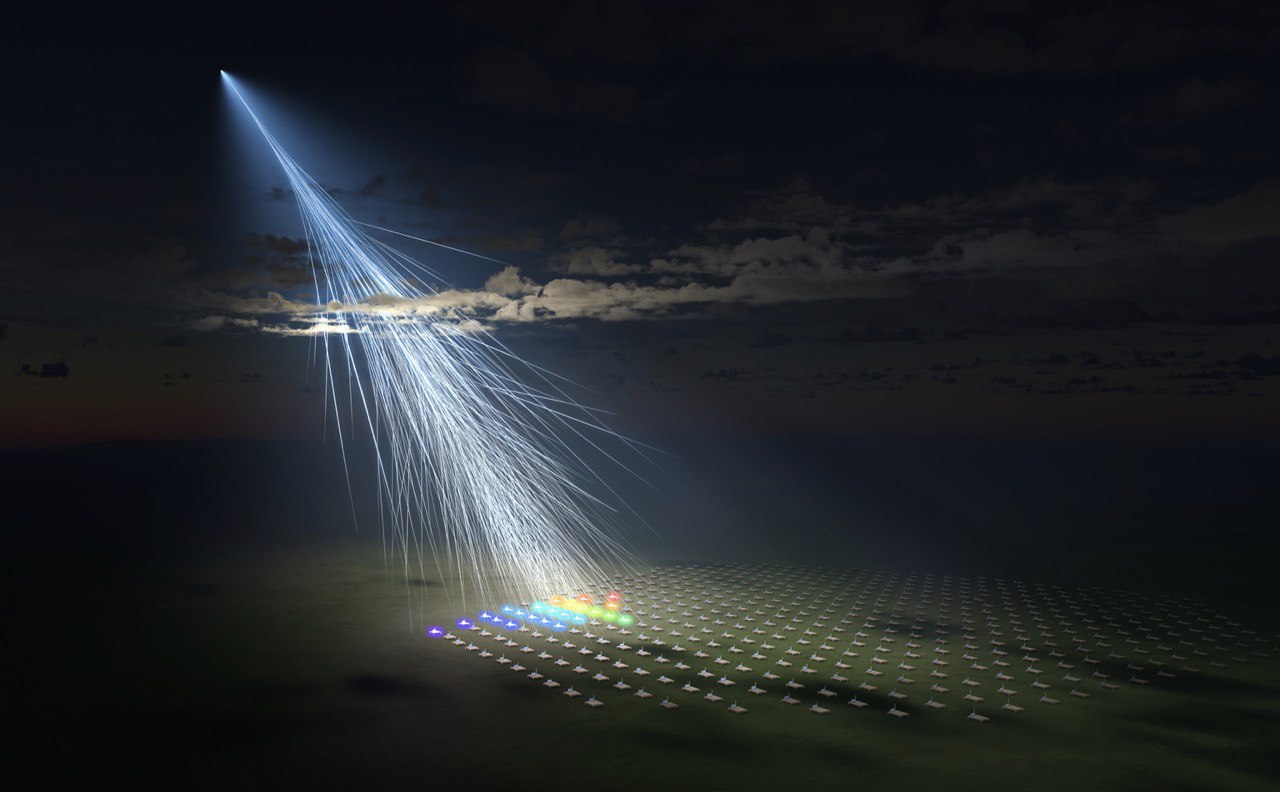
It contains a million times more energy than the most powerful accelerator ever made by man, which is thought to be only capable of creating phenomena such as giant black holes in distant galaxies.
The fact is that a cosmic ray, a cosmic lightning of extremely high energy, struck the Earth. It has a million times more energy than the most powerful accelerator in human history.
Astronomers have monitored its orbit, but they have not found any objects in our galaxy or outside it that could explain its origin. This discovery from Osaka Metropolitan University, just published in the journal Science, sounds like the beginning of a science fiction movie that researchers have not yet been able to give a shocking title: Amaterasu, the sun goddess in Japanese mythology.
Cosmic rays are charged particles of energy that travel through the universe at speeds close to the speed of light. Low-energy ones are produced by the Sun, but high-energy ones are extremely rare, leading astronomers to suggest they can only come from outside our galaxy, because they require more active environments, such as black holes. In the centers of distant galaxies.
The astronomer explains: “It is known that they come from very violent phenomena, such as a supernova explosion, the collision of two stars, or when a black hole swallows a cloud of gas, but much is still unknown about their nature and properties.” Director of the Spanish National Astronomical Observatory, Rafael Batchelor.
When we talk about high energy, we’re talking about more than 10 to the 18th electron volt, or equivalently, one hexa electron volt (EeV), which is about a million times more than the large accelerator at CERN in Geneva is capable of. Amaterasu’s energy was 244 MeV
Since it is ionizing radiation, this means it has enough energy to snatch electrons from atoms and ionize them. If it reaches satellites or Earth, it can damage electronic equipment. But if it infects an organism, it can damage its biological tissues, causing a mutation in its DNA.
Professor Toshihiro Fuji, from the Graduate School of Science and the Nambu Yuichiro Institute for Theoretical and Experimental Physics at Osaka Metropolitan University, and an international team of scientists, have been detecting these rays since 2008 through the Telescope Array Experiment. A probe consisting of 507 stations covering an area of 700 square kilometers in the US state of Utah. It was May 27, 2021 when Amaterasu was spotted.
“When I discovered it, I thought it must be a mistake, because it showed a level of energy not seen in decades,” Professor Fujii says. Such an energy level is comparable to that of the most energetic cosmic ray ever observed, which scientists unsuspectingly named, Oh My God, which struck Earth in 1991 with an energy of 320 MeV.
On August 7, 1912, physicist Victor Hess flew a balloon to an altitude of 5,300 meters and discovered that at this altitude there was three times more ionizing radiation than on Earth, so the radiation must have come from space. More than a century later, we still don’t know for sure how they are produced or where they come from.
Amaterasu, for now, is as mysterious as the Japanese goddess herself, but there is hope that her discovery will open the way for scientists.
“No promising astronomical object matching the direction from which it arrived has been identified, fueling the presence of hitherto unknown astronomical phenomena with physical origins beyond the Standard Model,” Professor Fujii noted.
The rays that reach Earth are composed of charged particles, and they change direction following the strange lines of magnetic fields that cross the interstellar medium. So, to find out where they come from, instead of directly detecting cosmic rays, we can try to observe some of the effects they cause,” Batchelor explains.
When a single energetic cosmic ray hits the Earth, typically interacting high in the Earth’s atmosphere, it undergoes a physical particle interaction with an air atom, splitting the atom into pieces. The atom fragments that emerge usually have enough energy to smash into additional atoms and so on, forming a shower of energetic subatomic particles.
Beyond imagination and with science advancing further than ever before…

“Total alcohol fanatic. Coffee junkie. Amateur twitter evangelist. Wannabe zombie enthusiast.”





More Stories
Is this what the PS5 Pro will look like? (Image)
Finally, Windows 11 24H2 update significantly boosts AMD Ryzen – Windows 11 performance
Heart Surgeon Reveals The 4 Things He ‘Totally Avoids’ In His Life